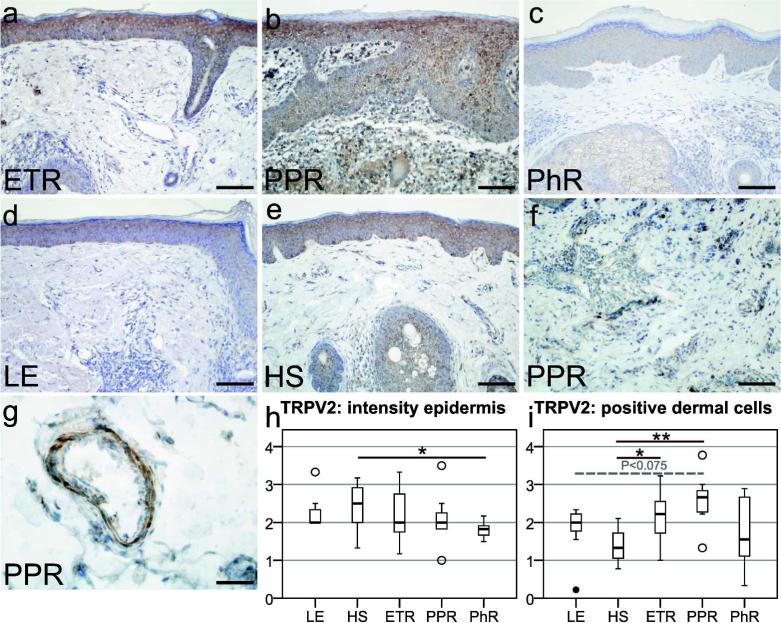Figure 1.
Localization of transient receptor potential vanilloid subfamily 2 (TRPV2) in erythematotelangiectatic rosacea (ETR), papulopustular rosacea (PPR), phymatous rosacea (PhR), lupus erythematosus (LE), and healthy skin (HS), followed by semiquantitative analysis of TRPV2 immunoreactivity in the epidermal or dermal compartment. (a–e) TRPV2 immunostaining was observed in keratinocytes in all study groups. (a, b, f) Strong dermal labeling was found on immune cells in ETR and PPR. Fibroblasts and endothelial cells in (a) ETR, and smooth muscle cells of blood vessels in (g) PPR also showed immunoreactivity. (h) Semiquantitative examination of epidermal TRPV2 staining displayed a decreased intensity in PhR (P<0.05) as compared with HS. (i) Semiquantitative analysis of TRPV2-positive immune cells displayed an increased staining in PPR (P<0.01) and ETR (P<0.05) as compared with HS. Additionally, PPR revealed an enhanced immunoreactivity as compared with LE (P<0.075). Bar=100 µm (a–f) and 50 µm (g); unfilled circles represent outliers; *P<0.05, **P<0.01.

